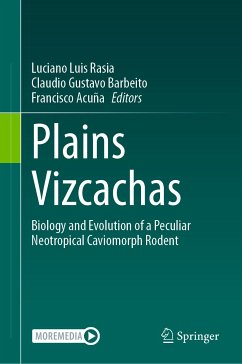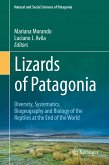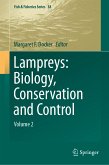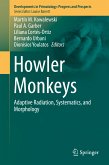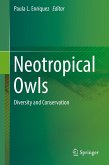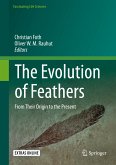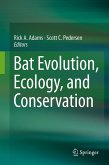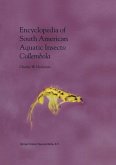Plains Vizcachas (eBook, PDF)
Biology and Evolution of a Peculiar Neotropical Caviomorph Rodent
Redaktion: Rasia, Luciano Luis; Acuña, Francisco; Barbeito, Claudio Gustavo


Alle Infos zum eBook verschenken

Plains Vizcachas (eBook, PDF)
Biology and Evolution of a Peculiar Neotropical Caviomorph Rodent
Redaktion: Rasia, Luciano Luis; Acuña, Francisco; Barbeito, Claudio Gustavo
- Format: PDF
- Merkliste
- Auf die Merkliste
- Bewerten Bewerten
- Teilen
- Produkt teilen
- Produkterinnerung
- Produkterinnerung

Hier können Sie sich einloggen

Bitte loggen Sie sich zunächst in Ihr Kundenkonto ein oder registrieren Sie sich bei bücher.de, um das eBook-Abo tolino select nutzen zu können.
The plains vizcacha (Lagostomus maximus) is a remarkable rodent of the Neotropic given several peculiar aspects of its biology, some of them quite unique among rodents or even among mammals. This book gathers specialists studying plains vizcachas from very different approaches, including paleontology, systematics, morphology, physiology, development and conservation. It is divided in two Parts, 1) Evolutionary History, and 2) Morphology, Development and Physiology. It will surely be a required reading for any researcher working with caviomorph rodents, mastozoology of the Neotropics or internal anatomy and physiology of mammals.…mehr
- Geräte: PC
- ohne Kopierschutz
- eBook Hilfe
- Größe: 22.43MB
![Lizards of Patagonia (eBook, PDF) Lizards of Patagonia (eBook, PDF)]() Lizards of Patagonia (eBook, PDF)177,95 €
Lizards of Patagonia (eBook, PDF)177,95 €![Lampreys: Biology, Conservation and Control (eBook, PDF) Lampreys: Biology, Conservation and Control (eBook, PDF)]() Lampreys: Biology, Conservation and Control (eBook, PDF)129,95 €
Lampreys: Biology, Conservation and Control (eBook, PDF)129,95 €![Howler Monkeys (eBook, PDF) Howler Monkeys (eBook, PDF)]() Howler Monkeys (eBook, PDF)113,95 €
Howler Monkeys (eBook, PDF)113,95 €![Neotropical Owls (eBook, PDF) Neotropical Owls (eBook, PDF)]() Neotropical Owls (eBook, PDF)137,95 €
Neotropical Owls (eBook, PDF)137,95 €![The Evolution of Feathers (eBook, PDF) The Evolution of Feathers (eBook, PDF)]() The Evolution of Feathers (eBook, PDF)81,95 €
The Evolution of Feathers (eBook, PDF)81,95 €![Bat Evolution, Ecology, and Conservation (eBook, PDF) Bat Evolution, Ecology, and Conservation (eBook, PDF)]() Bat Evolution, Ecology, and Conservation (eBook, PDF)161,95 €
Bat Evolution, Ecology, and Conservation (eBook, PDF)161,95 €![Encyclopedia of South American Aquatic Insects: Collembola (eBook, PDF) Encyclopedia of South American Aquatic Insects: Collembola (eBook, PDF)]() Charles W. HeckmanEncyclopedia of South American Aquatic Insects: Collembola (eBook, PDF)161,95 €
Charles W. HeckmanEncyclopedia of South American Aquatic Insects: Collembola (eBook, PDF)161,95 €-
-
-
Dieser Download kann aus rechtlichen Gründen nur mit Rechnungsadresse in A, B, BG, CY, CZ, D, DK, EW, E, FIN, F, GR, HR, H, IRL, I, LT, L, LR, M, NL, PL, P, R, S, SLO, SK ausgeliefert werden.
- Produktdetails
- Verlag: Springer International Publishing
- Seitenzahl: 386
- Erscheinungstermin: 29. März 2024
- Englisch
- ISBN-13: 9783031494871
- Artikelnr.: 70264691
- Verlag: Springer International Publishing
- Seitenzahl: 386
- Erscheinungstermin: 29. März 2024
- Englisch
- ISBN-13: 9783031494871
- Artikelnr.: 70264691
- Herstellerkennzeichnung Die Herstellerinformationen sind derzeit nicht verfügbar.
